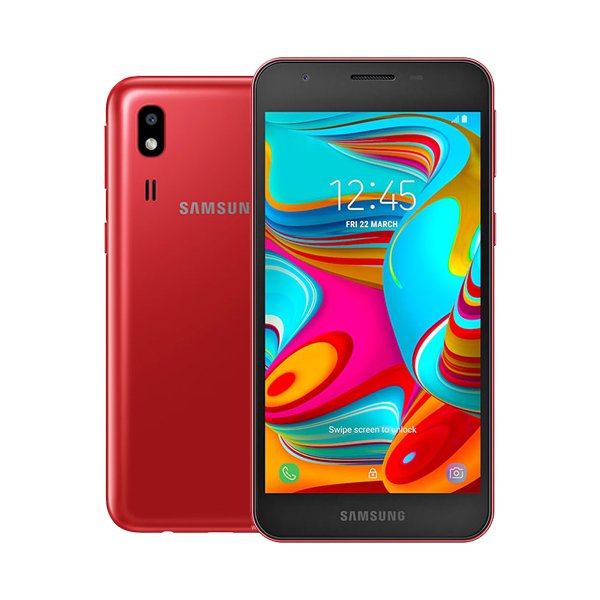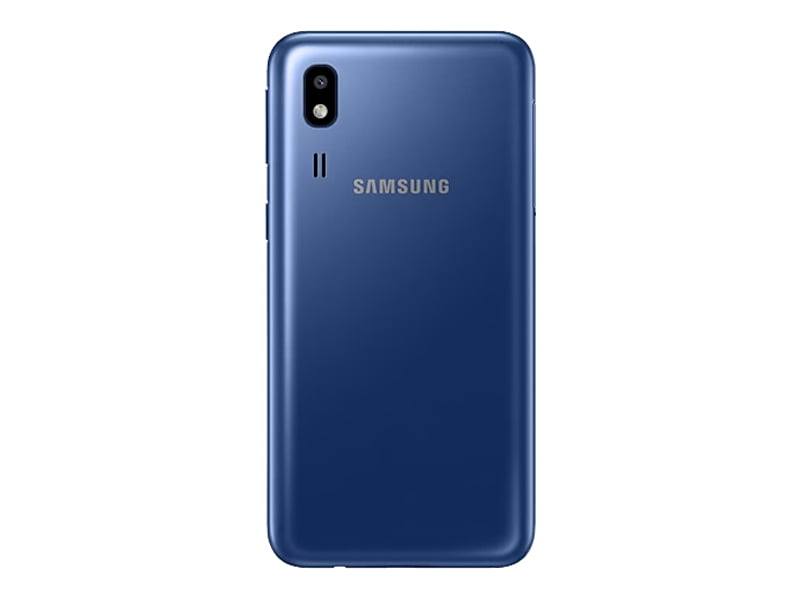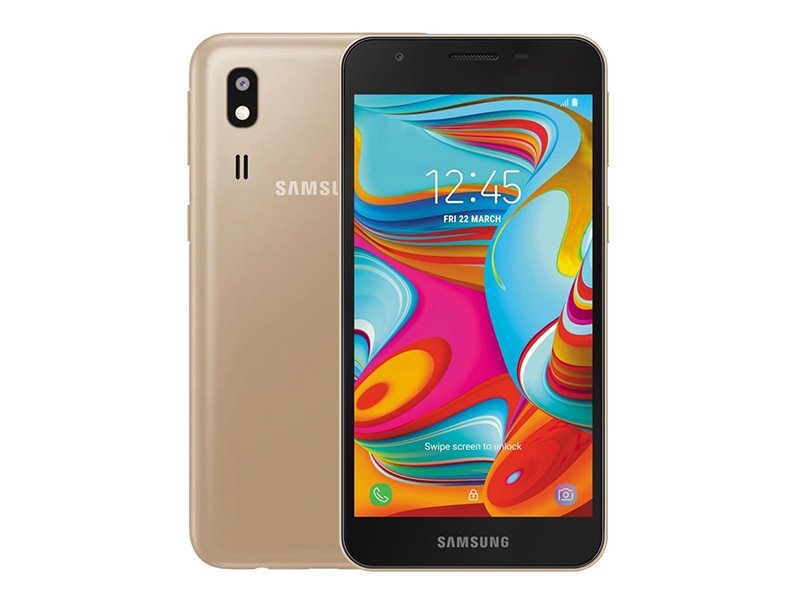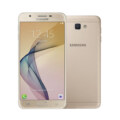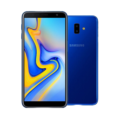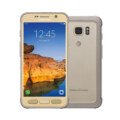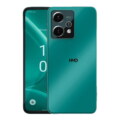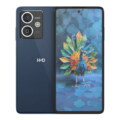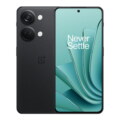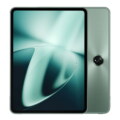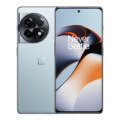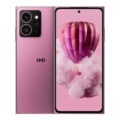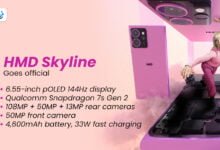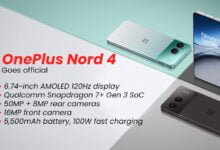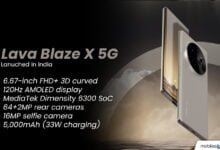- Home
- All Products
- Samsung
- Samsung Galaxy A2 Core
Samsung Galaxy A2 Core
-
Display
5.00-inch (540x960
-
Processor
Samsung Exynos 7 Octa 7870
-
Rear Camera
5MP
-
RAM
1GB
-
Storage
8GB/16GB
-
Battery Capacity
2600mAh
-
OS
Android 9.0 Pie (Go edition)
Specifications
Network
|
Technology
|
GSM / HSPA / LTE |
|
2G Bands
|
GSM 900 / 1800 - SIM 1 & SIM 2 (Dual SIM model only)
|
|
3G Bands
|
HSDPA 900 / 2100 - A260F/DS
HSDPA 850 / 900 / 2100 - A260G/DS
|
|
4G Bands
|
1, 3, 7, 8, 20 - A260F/DS
1, 3, 5, 7, 8, 40, 41 - A260G/DS
|
|
Speed
|
HSPA 42.2/5.76 Mbps, LTE Cat4 150/50 Mbps
|
View More
View Less
Launch
|
Announced
|
2019, April |
|
Status
|
Available. Released 2019, April |
Body
|
Dimensions
|
141.6 x 71 x 9.1 mm (5.57 x 2.80 x 0.36 in) |
|
Weight
|
142 g (5.01 oz) |
|
Build
|
Glass front, plastic back, plastic frame
|
|
SIM
|
Single SIM (Nano-SIM) or Dual SIM (Nano-SIM, dual stand-by) |
Display
|
Display Type
|
PLS LCD |
|
Size
|
5.0 inches, 68.9 cm2 (~68.6% screen-to-body ratio) |
|
Resolution
|
540 x 960 pixels, 16:9 ratio (~220 ppi density) |
|
Extra Features
|
|
Memory
|
RAM
|
1GB |
|
Expandable
|
microSDXC (dedicated slot) |
|
Internal
Internal Storage is a data storage space (flash memory) mostly used in smartphones, tablets and other electronic devices where operating system, apps, music, photos, videos, files and other user data Is stored. |
8GB/16GB |
Software
|
OS
OS => Every computer system run on a base software called Operating System (OS). Operating System controls all basic operations of the computer (such as smartphone, PDAs, tablet computers and other handheld devices). The Operating System allows the user to install and run third party applications (apps), apps are used to add new functionality to the device. |
Android 8.0 Oreo (Go edition) |
|
Chipset
Chipset is a group of integrated circuits designed to perform one or a more dedicated functions, often with real time computing constraints, Popular smartphones are equipped with more advanced embedded chipsets that can do many different tasks depending on their programming. |
Exynos 7870 Octa (14 nm) |
|
CPU
CPU (Central Processing Unit) mostly known as processors, CPU processes instructions in order to carry out certain functions that make your device operate properly. Processors are often described as the brain of computers, smartphones and tablets, Smartphones and tablets rely on processors to carry out their every task, Processors are an incredibly important factor in selecting any type of computing device, including your smartphone. |
Octa-core 1.6 GHz Cortex-A53 |
|
GPU
GPU (Graphics Processing Unit) is a single-chip processor designed to rapidly manipulate and alter memory to accelerate the creation of images in a frame buffer intended for output to a display, This includes things such as lighting effects, object transformations, and 3D motion. |
Mali-T830 MP1 |
Camera
|
Rear camera
|
5 MP, f/1.9, AF |
|
Features
|
LED flash, HDR |
|
Rear Video
|
1080p@30fps |
|
Front camera
|
5 MP, f/2.2 |
Features
|
Sensors
Sensors are electronic components that detects and responds to some type of input from the physical environment. The specific input could be light, heat, motion, moisture, pressure and location, The output is generally a signal that is converted to use in computing systems, a location sensor, such as a GPS receiver is able to detect current location of your electronic device. |
Accelerometer, Proximity |
|
Sound
|
3.5mm Audio Jack, Speaker Phone |
|
Messaging
|
SMS(threaded view), MMS, Email, Push Mail, IM |
|
Browser
Web Browser => a web browser is a software application used to locate, retrieve and display content on the World Wide Web, including Web pages, images, video and other files, The primary function of a web browser is to render HTML, the code used to design or markup webpages. |
HTML5 |
|
Games
|
Built-in + Downloadable |
|
Touch Screen
|
Yes |
|
Extra
|
Document viewer, Photo/video editor, eMMC 5.1 |
Connectivity
|
WLAN
|
Wi-Fi 802.11 b/g/n, Wi-Fi Direct |
|
Bluetooth
Bluetooth is a wireless communications technology for exchanging data between mobile phones, headsets, computers and other network devices over short distances without wires, Bluetooth technology was primarily designed to support simple wireless networking of personal consumer devices. |
4.2, A2DP, LE |
|
GPS
GPS The Global Positioning System is a satellite-based radio navigation system, GPS permits users to determine their position, velocity and the time 24 hours a day, in all weather, anywhere in the world, In order to locate your position, your device or GPS receiver must have a clear view of the sky. |
GPS, GLONASS, BDS |
|
NFC
NFC (Near field communication) is a set of standards for smartphones and similar devices to establish peer-to-peer radio communications with each other by touching them together or bringing them into proximity, usually no more than a few inches. |
No |
|
Radio
|
FM radio |
|
USB
|
microUSB 2.0, OTG |
Battery
|
Battery Type
Battery Type => Cell phones run on various kinds of batteries depending on the manufacturer, phone size or shape and features. There are basically four types of cell phone batteries => Lithium Polymer, Lithium Ion, Nickel Metal Hydride and Nickel Cadmium. |
Li-Ion (Lithium Ion) |
|
Capacity
Battery Capacity is a measure (typically in Amp-hr) of the charge stored by the battery, and is determined by the mass of active material contained in the battery. The battery capacity represents the maximum amount of energy that can be extracted from the battery under certain conditions. |
2600 mAh, non-removable |
Disclaimer Note
We can not guarantee that the information on this page is 100% correct.
